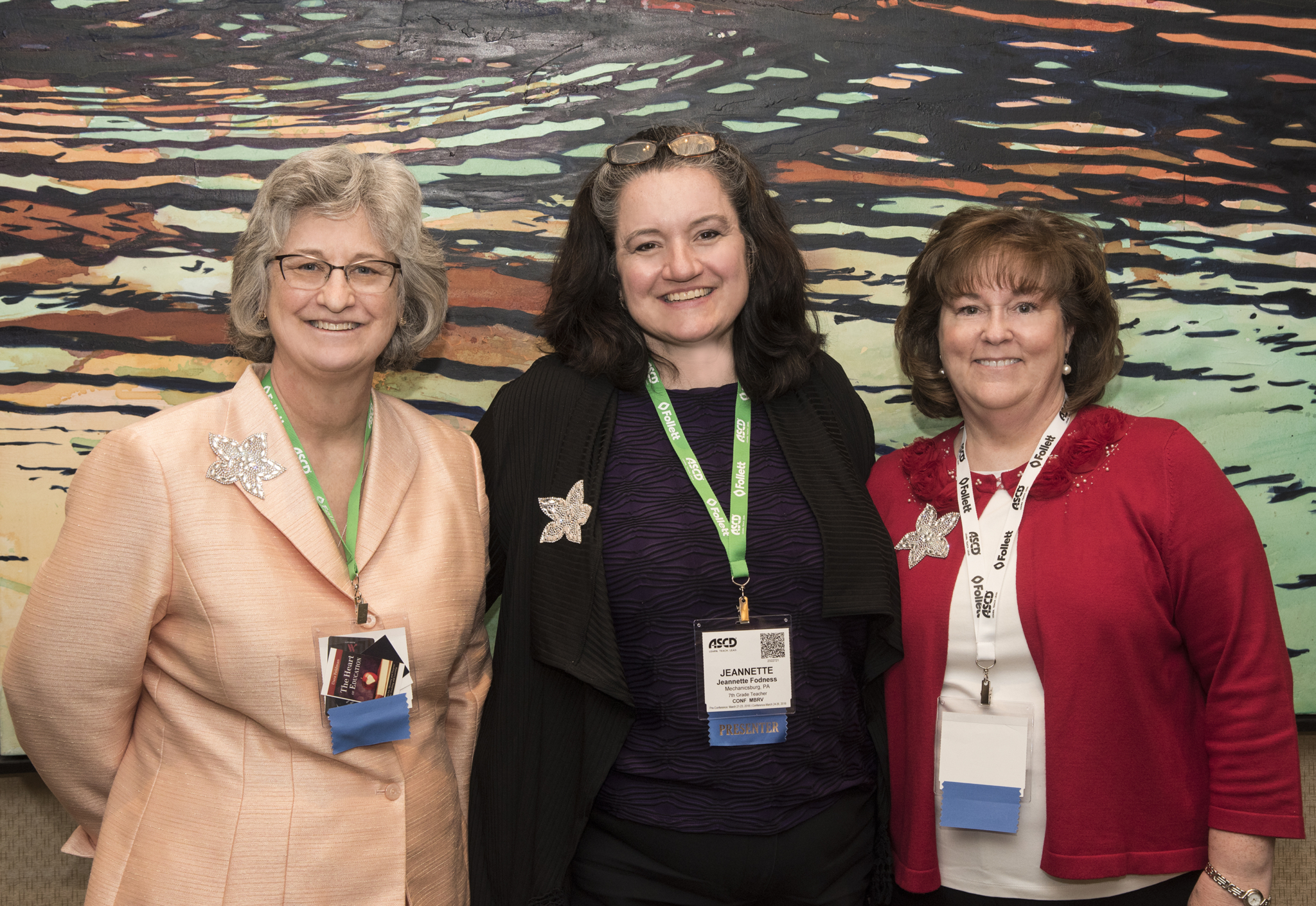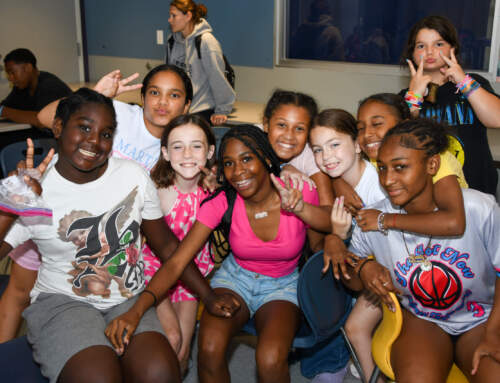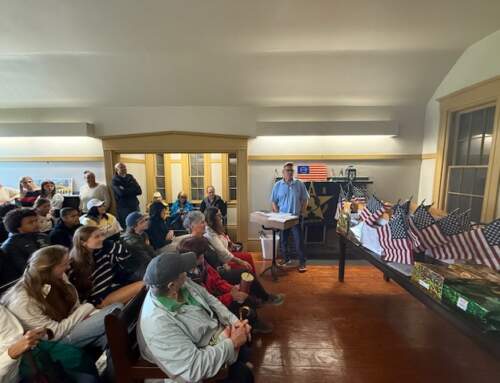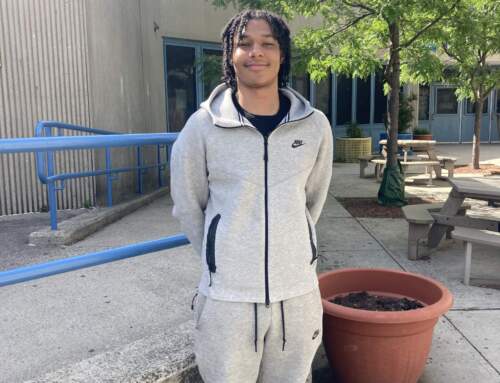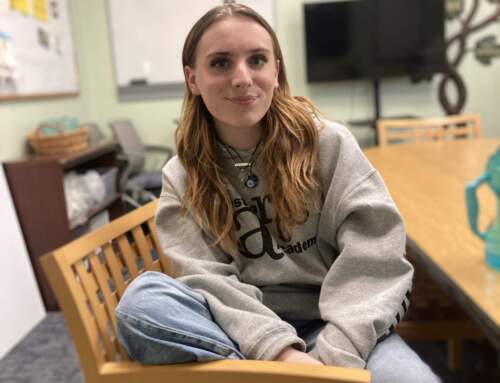By Richard Campbell
One of the more complex and widespread problems in today’s educational environment is how to educate students who are dealing with Adverse Child Experiences, commonly called ACEs. With the ASCD Conference emphasis upon educating the whole child, a group of educators from South Central Pennsylvania came prepared to the Boston Convention and Exhibition Center with an in-depth presentation for educators on how to detect, evaluate, and respond to the problem of ACEs.
Their presentation was entitled: “ACEs Paradigm Shift in How the School Community Can Address the Whole Child.” The presenters were Ellen G. Smith MD., School Counselor, Meg Riley M.ED, MMS, and Jeannette Fodness, Teacher and Instructional Coach M.Ed, who are professionals working in their respective school districts with educators and children. Utilizing an interesting round-robin approach to the presentation, they led a group of educators through some pretty complex, and heavy emotional material.
This, as one might imagine, is not an easy subject to talk about. The abuse of children is not only wide spread, involves a level of intense pain for the victims, and the after effects are often heart breaking for educators to witness. Estimates vary, but in the United States, anywhere from 25% to 52% of children in our schools have been the victim of child abuse- whether emotional, physical or sexual abuse, the mark that abuse leaves on the lives of children in development can seem indelible. The paradigm shift in the title of the presentation perhaps emphasizes a new way of gathering forces for educators to assist students who may have suffered abuse. It has fallen mostly to educators to find solutions to these seemingly intractable problems, often without significant resources from financially strapped school districts.
Many who are not familiar with the great positive social impact of early education in American society often have no idea about this part of the contemporary educational mission. Complex as this subject is, the presenters provided a concise road map for educators to follow, and a bevy of resources for participants to pursue further studies. How to handle events when a child recounts having witnessed abusive violence, or reveals that they themselves have been abused, is a complex issue. Child abuse cuts across all kinds of cultural and societal norms, and often involves legal and societal problems as well. Even more difficult is when the child clearly has been abused, and doesn’t recall the abuse, but is still displaying behaviors in the classroom that indicate abuse has occurred.
Keep in mind that teachers are often dealing with large classes of students in which multiple children may exist with these problems. The social lives of children are complicated by their status in society, and the limitations of their abilities to communicate problems, the nature of which they might not even fully grasp. The other part of the equation- how family members will respond to inquiries about suspected abuse- opens a whole other level of difficulty for teachers, guidance counselors and school psychologists.
In the classroom teachers are trained now to detect signs of child abuse, exhibited through symptoms within the educational environment, and how to assist students who have suffered abuse at home or in society at large. This presentation emphasized that as the front line of defense for children, educators need not only the skills of teachers, but increasingly also skills associated with social workers.
It was emphasized that studies reveal that children who do not receive help in recovering from these experiences may go on to lead very hard lives as adults- besides presenting a difficult situation in the educational environment by disrupting schooling that makes it difficult for them, and others to learn. It was demonstrated that the learning impairment that stems from abuse has far reaching implications in the lives of abused children. The workshop showed what educators need to know to spot the various signs of childhood trauma, and how to provide some measure of relief or mitigation of the adverse experiences so that the children can develop and grow in trusting relations with others. People in the workshop immediately responded to the suggestion that some students with problems stemming from abuse might thrive on the chaos that is created by their behaviors, and these children often aren’t even aware of the dynamic, or origin of their behaviors.
The presenters emphasized the developmental skills needed to bring to children who have been abused to solve their problems are: trust, empathy, coping, safety, being responsive, and learning self-regulation and self-advocacy. They detailed ways that educational professionals need to approach the child, how to engage the community around the child to find out what has happened, in order to formulate a plan. This lead to a discussion on the role of mindfulness in the process of helping children suffering from abuse. There was another discussion about how educators in leadership roles can bring the level of their staff performance up on this issue- to raise awareness, and effectively utilize relationships across the school to spot and help children at risk.
The role of parents and family continued throughout as a theme, with the realization that solving the problem is many times connected to removing the abuser from contact with the child, or removing the child from abusive situations at home. This puts the school in a difficult relationship with the family, and involves complex negotiations. Interestingly, the presenters also went to great lengths to show that educators themselves may harbor latent emotions or experiences from their own past ACEs that could trigger reactions when they encounter students who have been abused. They emphasized that it may seem obvious that trauma impairs learning, (and showed medical evidence of this), but the manifestation of trauma is not so simple to evaluate as it ranges in different kinds of behaviors, from being overtly shy- to being a bully or simply acting out. All of these may be clues to an underlying problem of abuse, but the educator has to discover if this is so by relating to the child. The emphasis of moving from “what’s wrong with you” to “what happened to you” was stressed-and that educators need to gain trust of the child to help them.
Here it was emphasized that children who get help don’t have to live a life hindered by disorders, especially if they receive early intervention. The presenters stressed that educators need to know about body language, cultural differences in reactions to trauma or abuse, and ways to allow children to open up to them in order to find out the source of the problem. There are so many kinds of adverse child experiences, not all of them so intentional or easy to pin point. Perhaps a parent has died, or is experiencing PTSD upon returning from warfare. Maybe the child is being bullied by someone in the neighborhood, or they are suffering from emotional or sexual abuse perpetrated by a relative. Sometimes children become pawns in an emotional battle during divorce or separation. The ranges of abuse or trauma children suffer, and associated manifestations in their behavior were discussed in considerable deta i l.
Of course the positive side after discussing the details of spotting abuse and the impact upon children, is the educator’s role as restorative agents, and results that can be achieved for children who receive help from trained professionals. Knowing how to set up a path of discovery for the child, through actions and activity, to make them see outside of their situation long enough to gain insight and find healing through a series of strategies was presented. In this sense the presenters stressed developing school wide policies and procedures that impact: “achievement, performance and behavior.” The role of restorative justice in education was touched upon in its relation to addressing child abuse.
While this workshop did not focus on protocols for developing plans of therapy or counseling for children, it laid out a road map of signs and signals for educators, that would assist them in understanding children at risk in the community.
With a difficult subject at hand, the presenter’s tailored their material carefully and presented it with clarity to engage their audience into action. The conclusion is that it is often teachers who make the breakthrough for students who have suffered abuse, and they do so by learning to see the whole child in the educational process. Below are some resources related to the workshop.
Resources:
Harvard’s Institute for the Developing Child.
https://developingchild.harvard. edu
Childhood Trauma Blog Series by TLC, https://www. starr.org/training
DaraFeldman.com
See Dear Compassionate Colleague
American Academy of Child and Adolescent Psychiatry
The Role of Educators in Preventing Child Abuse:
https://www.childwelfare.gov/ pubs/usermanuals/educator/
Burke Harris, Nadine,
The Deepest Well: Healing the Long-Term Effects of Childhood Adversity, Boston : Houghton Mifflin Harcourt,2018

